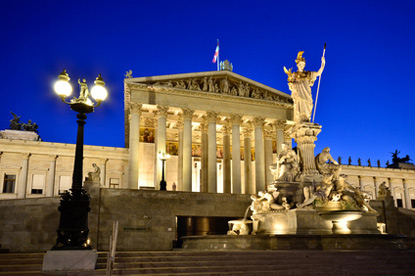 Austrian Parliament, Vienna.
Austrian Parliament, Vienna.
Introduction
Vienna (Wien in German; pop. 1.7 million) is the capital and largest city of Austria, and the country's cultural, economic, and political centre. Seat of the Habsburg Monarchy for nearly 400 years, Vienna shines brighter than any other city in Central Europe. Endowed with superb Medieval, Baroque and Classical architecture, it plays in the league of Europe's most beautiful capitals, along with London, Paris and Rome. The whole historic centre of Vienna has been designaed a World Heritage Site by the UNESCO in 2001.
Vienna is regarded as the capital of classical music. Famous composers who lived and worked there include Haydn, Mozart, Schubert, Beethoven, Johann Strauss (Sr. and Jr.), Bruckner, Brahms, Mahler, and Schönberg.
Various surveys between 2005 and 2012 (notably by The Economist, Mercer and Monocle) have consistently ranked Vienna as one of the world's most liveable cities. Since 2005, Vienna has been the world's top destination for international congresses and conventions.
Travel Community
Ask your travel questions on the Austria Travel Forum





